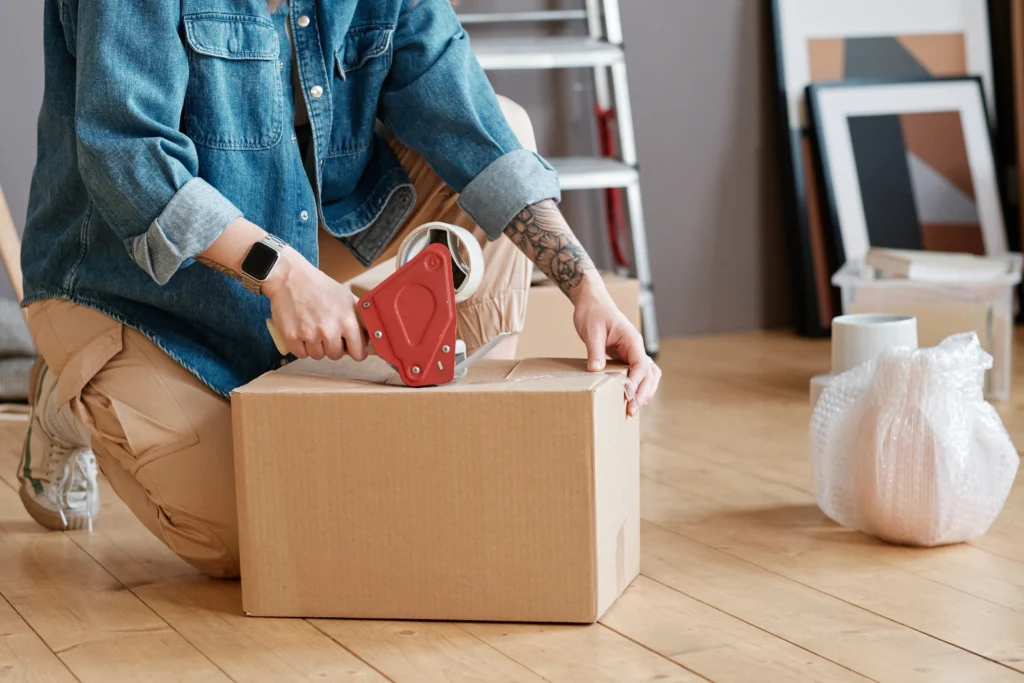
Packing for a move can feel overwhelming, but following a logical order makes the process smoother and more efficient. Instead of tossing everything into boxes at random, organizing your packing strategy helps ensure nothing gets lost, fragile items remain protected, and you have easy access to essentials when you need them. Here’s a step-by-step approach to packing in the right order for those who live in Alton, IL.
Start with Non-Essential Items
The best way to begin is by packing things you won’t need in the days or even weeks before the move. Seasonal decorations, out-of-season clothing, and rarely used kitchen appliances are good starting points. If you have bookshelves full of novels you haven’t touched in months or a collection of knickknacks sitting on display, those should also go into boxes early. The goal is to clear out as much as possible without affecting your daily routine. Another area to tackle early is storage spaces like the garage, attic, or basement. These areas often contain boxes of holiday decorations, old clothes, tools, or memorabilia that don’t require immediate access. Packing these up in advance not only reduces clutter but also allows you to sort through items and donate or discard what you no longer need.
Move on to Less Frequently Used Rooms
Once non-essentials are packed, shift your focus to rooms that don’t see much daily use. Guest bedrooms, formal dining rooms, and home offices (except for critical work-related items) are good next steps. Packing these rooms early helps streamline the process without significantly disrupting your day-to-day life. For furniture in these spaces, consider disassembling larger pieces if possible. Removing table legs or breaking down bed frames makes transportation easier and reduces the risk of damage. Be sure to keep all screws, bolts, and small parts in labeled bags so reassembly is simple once you arrive at your new home in Alton, IL.
Pack Delicate and Decorative Items
Artwork, framed photos, fragile decorations, and glassware should be carefully packed well before the move. Since these items require extra care, using bubble wrap, packing paper, and sturdy boxes ensures they arrive intact. It’s a good idea to label these boxes as “fragile” so movers (or you) handle them with extra caution.
Sort and Pack Clothing
About a week before moving day, start packing your clothing, beginning with off-season attire. If it’s summer, winter coats, boots, and sweaters can go into boxes first. For clothes you’ll need up until the last minute, set aside a suitcase with enough outfits to last a few days. This helps avoid the hassle of digging through boxes when you need something to wear in the first few days at your new place.
Tackle the Kitchen Last
Packing the kitchen is often the most time-consuming part of the process due to the number of breakable and essential items. Start by boxing up small appliances you don’t use daily, such as blenders, food processors, or mixers. Then, pack dishes, glassware, and pots and pans, making sure each is properly cushioned to prevent damage. You’ll want to keep a few essentials—such as a couple of plates, utensils, and a coffee maker—until the very end. Perishable food should either be eaten or donated, while pantry staples can be packed in advance.

Keep Essentials Handy
The final stage of packing involves everyday essentials. This includes toiletries, medications, important documents, chargers, and a few key kitchen supplies. Having a dedicated “essentials box” ensures you don’t have to dig through packed boxes on your first night in the new home. Bedding, pillows, and a few basic cleaning supplies should also be easily accessible, making the transition more comfortable. By following this structured approach, you can avoid the stress of last-minute packing and ensure everything is packed in an organized, efficient manner. With a little planning, you’ll be well-prepared for a smooth and successful move.
Live in Alton, IL? Looking to hire a moving company? Call Gerold Moving & Warehousing today!



